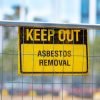Nearly one in five workers have experienced harm at work globally
A report released by Lloyd’s Register Foundation, titled ‘Engineering safer workplaces: Global trends in occupational safety and health’, has found that nearly one in five (18 per cent) workers have experienced harm at work globally.
The global safety charity is calling for more regular, tailored health and safety training and better reporting tools, after its annual report found that two thirds of the global workforce (62 per cent) have never received occupational health and safety (OHS) training about the risks associated with their work.
Rates of harm vary across sectors
The data was collected by global analytics firm Gallup, who conducted 147,000 interviews in 142 countries and territories around the world and found that workplace harm rates have remained steady since the Poll began in 2019 (19 per cent in the past two editions, compared to 18 per cent now).
The data found that rates of harm varied across sectors, with fishing named as the most dangerous occupation, ahead of construction and mining. Low- and lower-middle-income countries were also found to have higher workplace harm rates (19 per cent and 22 per cent respectively).
Two thirds of the global workforce have never received occupational health and safety (OHS) training about the risks associated with their work
Employment stability and training are a factor
The report found that those in less stable forms of employment, such as part-time employees, were more likely to suffer from harm than full-time employees (20 per cent versus 15 per cent).
This is compounded by the fact that rates of training were found to be lower for part-time employees — less than 23 per cent had received workplace safety training in the past two years, compared to 41 per cent of full-time employees.
Reporting rates
While only 51 per cent of the workers globally who experienced harm at work said they reported it, the report also established an important relationship between OHS training and reporting rates. The more recently people have had training, the more likely they are to report workplace harm if they experience it.
Individuals who had received workplace safety training in the last two years are also 3.3 times more likely to report harm, compared to those who have never received any training. Those who were trained, but not in the past two years, are 1.8 times more likely.
Special efforts must be made
Nancy Hey, Director of Evidence and Insight at Lloyd’s Register Foundation, said work and income is an important part of all our lives and for too many, that can come with a high personal cost.
“Low reporting rates, combined with a potential lack of awareness due to low training rates, mean that the true extent of workplace harm is rarely revealed.
“That’s why safety and health interventions that are both regular and tailored must be a priority for both businesses and policymakers, along with clear reporting tools for all employees — including both part-time and full-time.
“Special efforts must be made to reach those most at risk and ensure they have a holistic understanding of what safety and health means, as well as an in-depth knowledge of essential procedures in place to keep them safe,” Hey said.
The full 2024 report can be accessed here.


